Back in the 1990s, I went through a tanto phase. Specifically, I fell in love with the Americanized tanto as epitomized by the knives offered by Cold Steel at the time. No, Cold Steel didn’t invent the Americanized tanto — a wedge-shaped blade characterized by a secondary point at the junction of the main edge and the angled edge to the tip — but they did a lot to popularize it. The spectacle of Lynn Thompson stabbing his company’s tanto through a car hood would stay with a lot of us. And in the Eighties and Nineties, the ninja boom in popular culture contributed to the proliferation of inexpensive Americanized tanto knives, ultimately leading to the ubiquitous chisel grind.
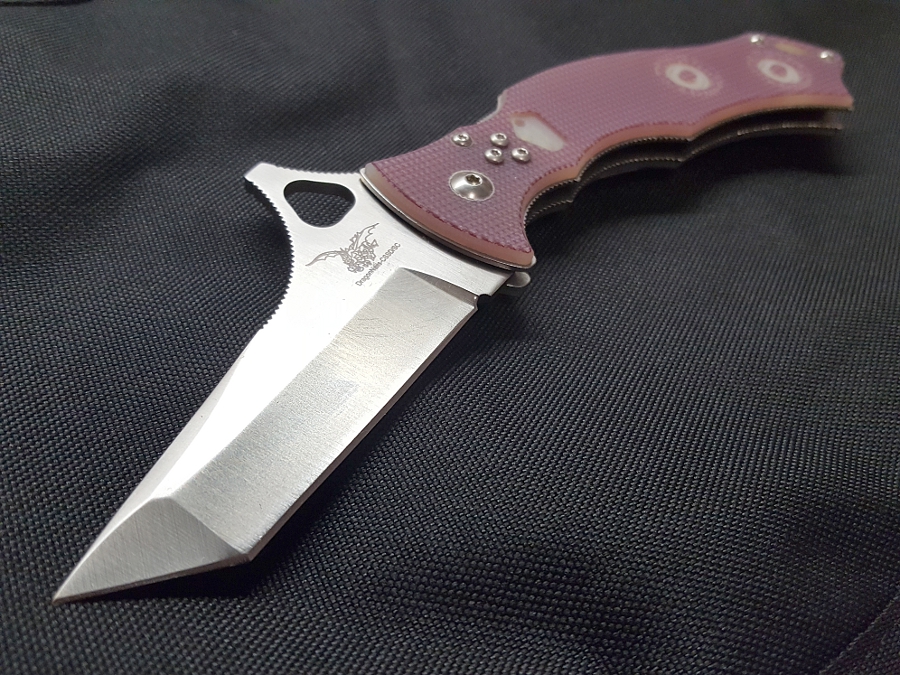
Manufacturers discovered that the two straight edges meeting at an angle were easy to produce. Sharpening them on only one side in a chisel grind was easier still, and hitting the whole thing with flat black spray paint to produce a “tactical” knife pretty much defined an era back then. Fortunately, both manufacturers and consumers have settled down when it comes to the tanto… but that does not mean the Americanized tanto, done correctly, does not still have its adherents. And for those who understand the difference between an Americanized tanto and a true Japanese “katana” style edge, there are reasons one might choose either… or both.
Enter, once again, Bram Frank. 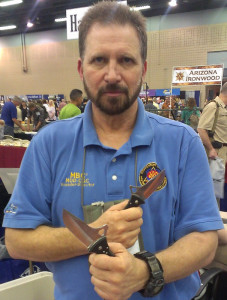 Over the years, The Martialist has profiled multiple knives conceived by Bram. He was among the first advertisers at the earliest version of The Martialist and encouraged us to build this online magazine. We’ve already looked at the latest incarnations of his folding knives and fixed blades. Now, we are looking at two new blade styles in his integrated product line: the tanto and katana blade Bram Frank LLC Gunting folders.
Over the years, The Martialist has profiled multiple knives conceived by Bram. He was among the first advertisers at the earliest version of The Martialist and encouraged us to build this online magazine. We’ve already looked at the latest incarnations of his folding knives and fixed blades. Now, we are looking at two new blade styles in his integrated product line: the tanto and katana blade Bram Frank LLC Gunting folders.
The founder of Common Sense Self-Defense/Street Combat, Bram Frank has spent nearly fifty years training in the martial arts. He holds an 8th dan Modern Arnis. Given this, there’s no doubt that Filipino martial styles and systems heavily influence his methodology, right to the name of the “Gunting” self-defense knives and tools he first designed years ago. (A gunting, in Filipino martial arts, is a “scissors” maneuver). Over the course of his career he has done a variety of self-defense instructional videos, through companies like Paladin Press and Video Quest, and has been featured in publications ranging from SWAT, Guns and Ammo, Police Journal, Tae Kwon Do & Korean Combative Arts, Filipino Martial Arts, and Tactical Knives.
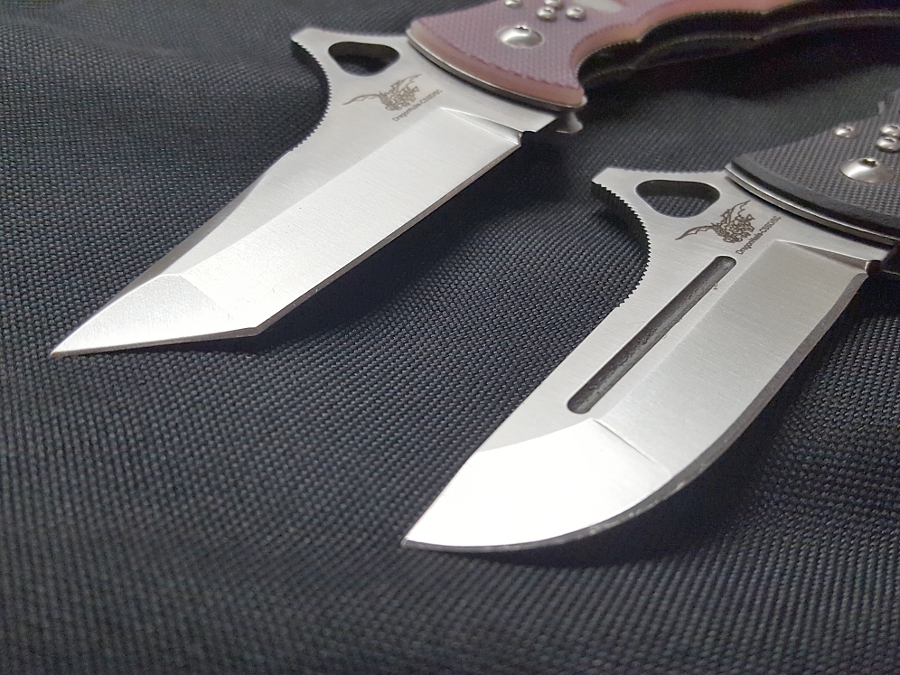
As we’ve covered before, other versions of Bram’s folding knives have been made by companies like Spyderco and Cherusker Messer. Bram’s knives are now made overseas in a small Chinese factory that Bram says is dedicated to producing his products. All of Bram’s LLC Gunting folders come in two sizes, Standard and Magnum.
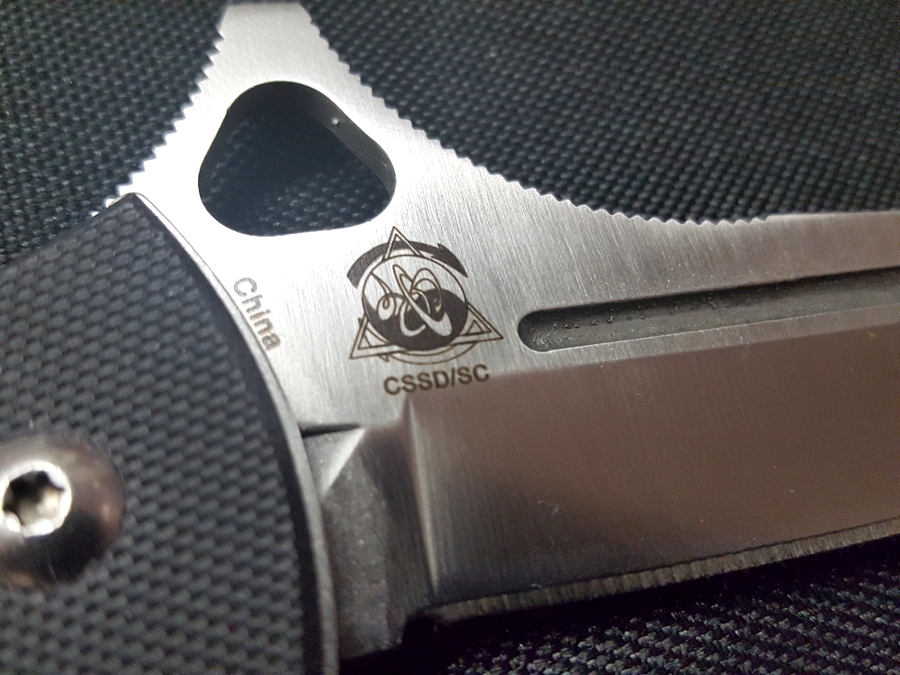
The pronounced ramp, or “Bramp,” has two uses: It can be used to open the knife kinetically on an opponent’s body (but NEVER on your own limbs, as you could be cut) or, when closed, it can be used to deploy the tool like a tiny hammer or hatchet. In hatchet mode the Gunting delivers painful, even debilitating strikes and could even be used to facilitate pressure point strikes and joint locks. The butt of the knives is also designed for blunt strikes.
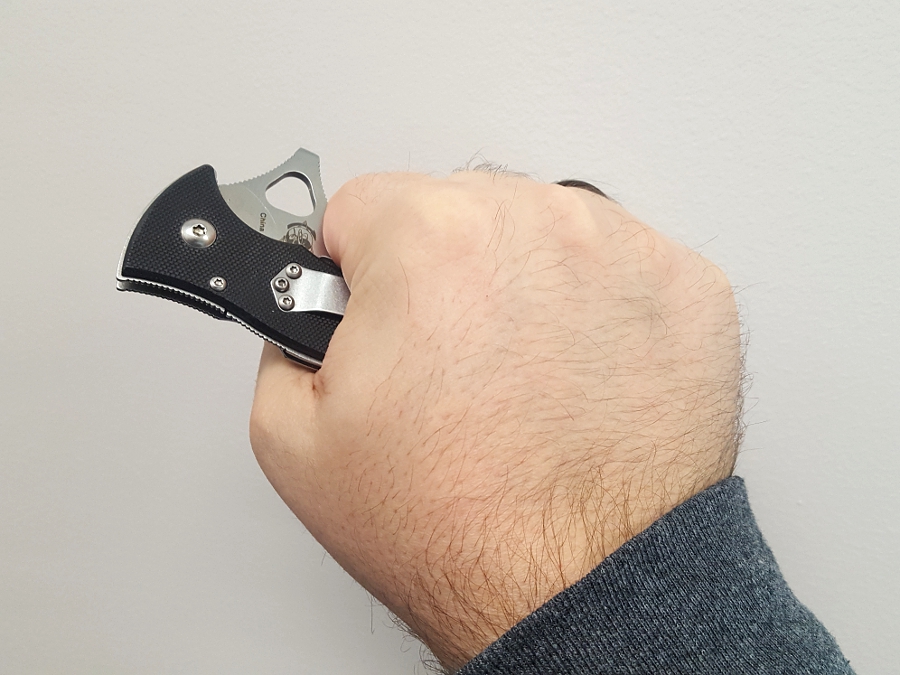
The knives feature multiple indexing points, including the spoon-shaped divot in the pocket clip. The “post in the hole” indexing circles are intended to facilitate grip changes, in fact. There is also a triangular hole in the Bramp for more conventional one-hand opening. The pocket clip is reversible for right- or left-hand use, oriented for tip-down carry only. The handle shape is marketed as “bio mechanical” for ergonomics and retention under stress, allowing a locked three-finger grip similar to what you might use on a firearm.
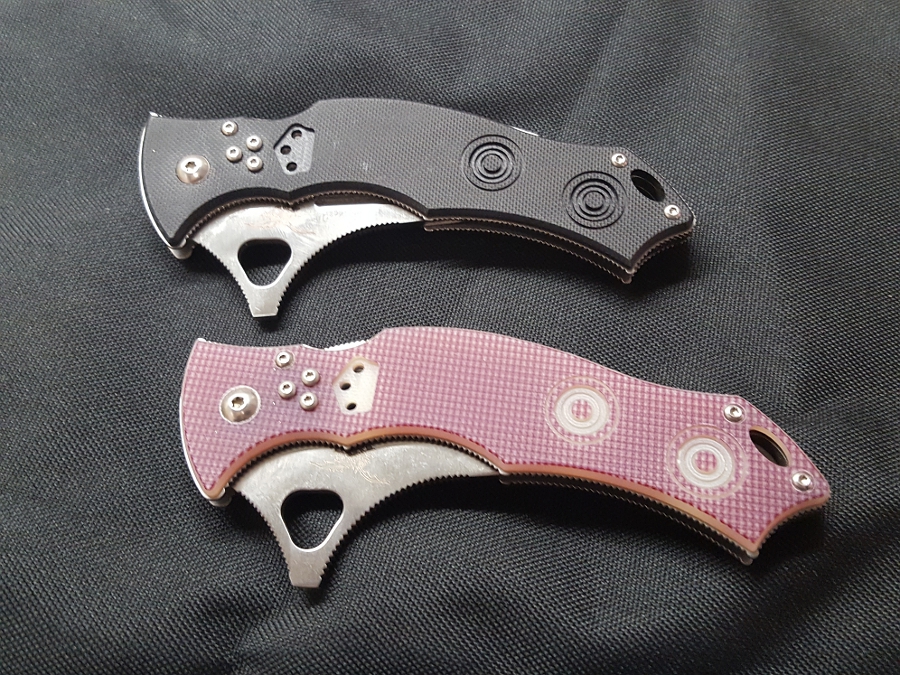
The standard-sized LLC Gunting Katana and Tanto folders are 5-1/5 inches long overall with a three-inch blade. Blade steel is 8Cr13M0V steel, the Chinese equivalent to AUS-8, hardened to HRC 56-58.
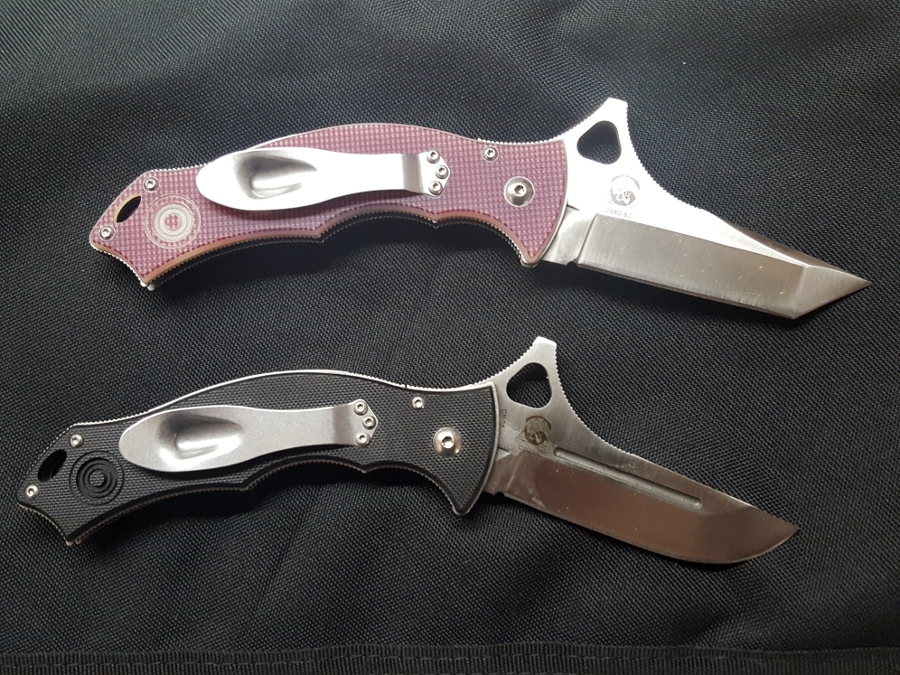
There is plentiful jimping for retention (it is everywhere, in fact, including all along the ventral service of the knife, on the dorsal surface at the ramp and the tail, and up and down both slopes of the Bramp). Both knives are extremely ergonomic and fit well in the hand, even my size-XL paws. Especially in a forward grip with the thumb on the Bramp, they just “lock in” to your palm.
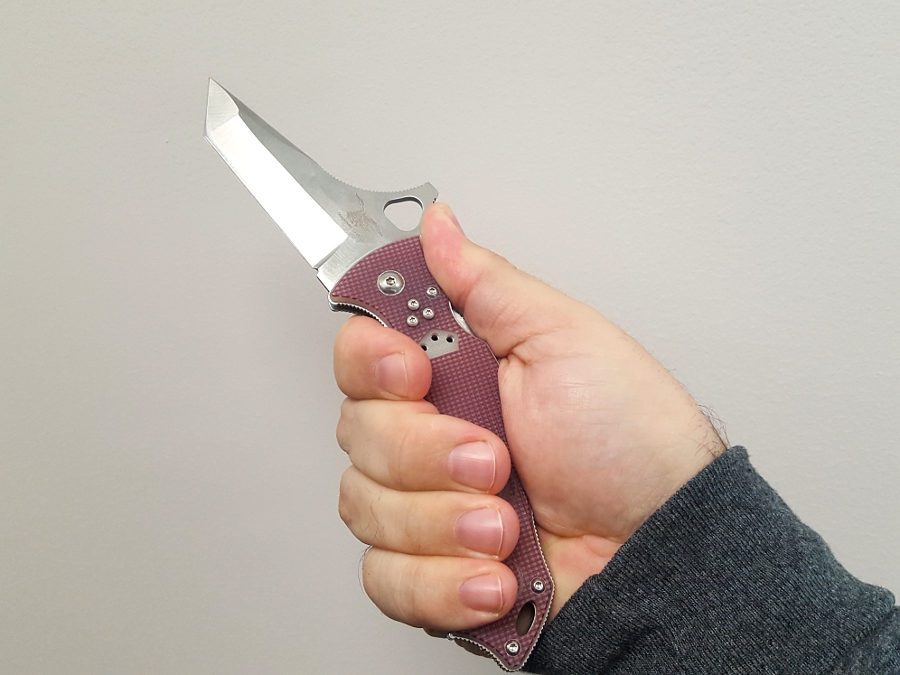
Handle scales are G10, which provide excellent traction. Fit and finish is good. Lock-up is also quite positive, with no vertical play in the tanto, the tiniest bit of vertical play in the katana blade (I would consider this a nit, because it’s not noticeable unless I work at it and is well within normal tolerances), and no lateral play at all in either knife. The knives open smoothly but stay closed when closed. My katana blade felt a little too easy to open, so I tightened the pivot with a Torx screw to adjust the knife to precisely what I wanted.
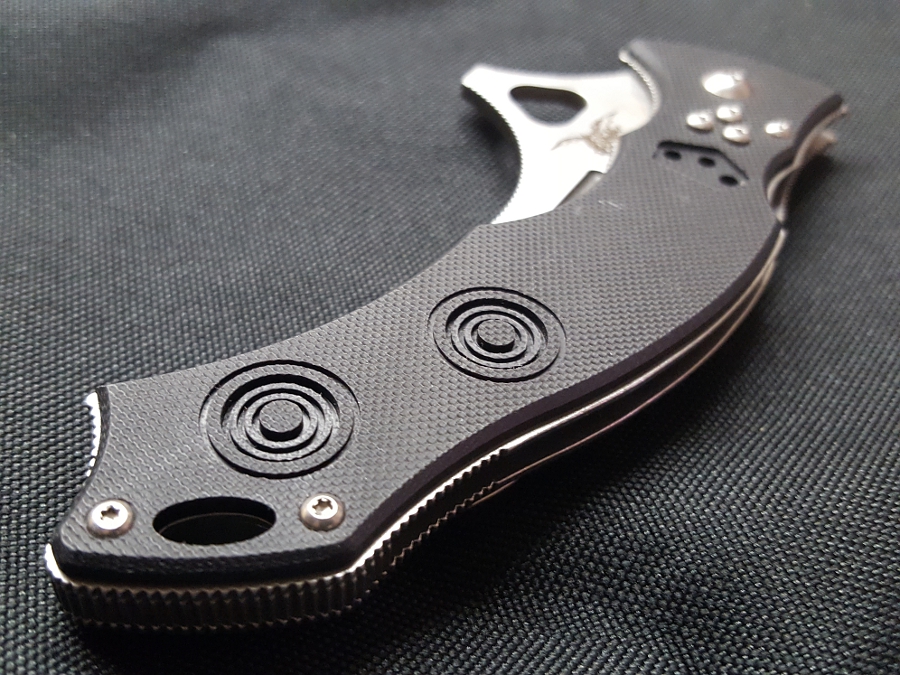
The liners are hardened steel, while the dual-access pivot pin is polished. The “compound puzzle lock” is a dovetail joint-into-blade arrangement similar to the “compression lock” found on some other knives. (The lock is actually an improvement on the compression lock, as it features a stop pin for, as Bram puts it, “Mr. Murphy.” It looks like nothing so much as a liner lock in the dorsal, rather than the ventral side of the handle. I have always found it a little awkward to disengage this lock with just one hand, but I am not a student of Bram’s system. I’ve also noticed that with practice this gets easier.
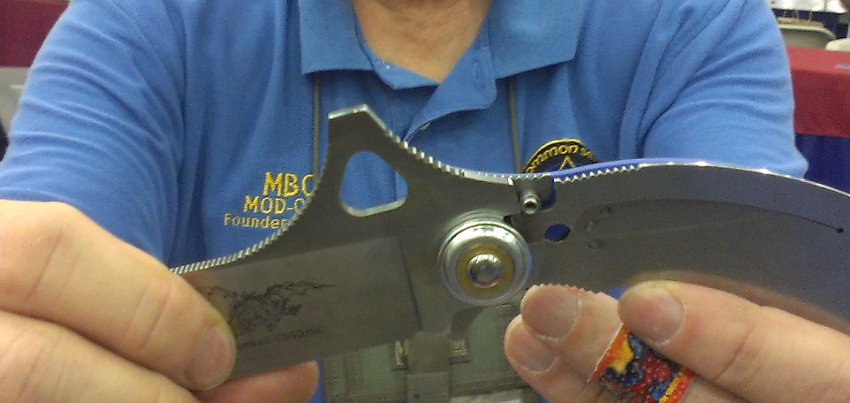
The blades of the knives were nicely sharp out of the box. They are ground on both sides. The Americanized tanto blade obviously has no belly for slicing, so it isn’t the best cutter in the world. It excels, however, a poking, scraping, and punching, making deep wedge-shaped holes in whatever you drive it through. The katana blade, thanks to its sweeping Japanese-style point, slices like a dream. Its point is slightly less of a needle-tip than the tanto knife blade’s point, but it is still acceptably sharp.
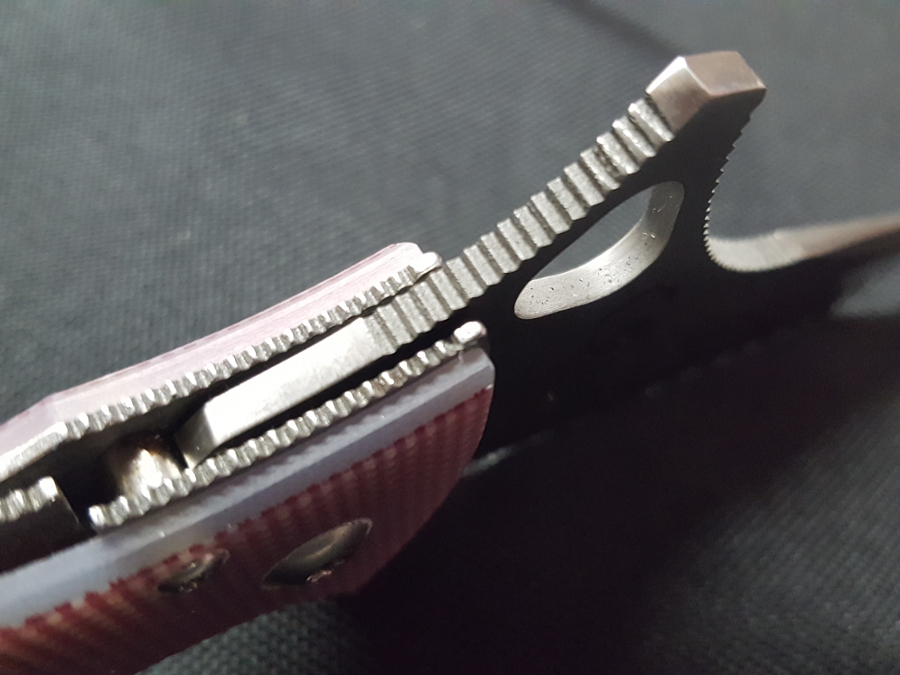
Matching unsharpened drones for training, with red handles, are also available (the standard-sized drone is shown here). Bram also offers Standard and Magnum sized CRMIPT2 tools, an impact device marketed to law enforcement. This is the Close Range Medium Impact Tool, the latest incarnation of a device that, like his knives, Bram has been showing people to use for years. The CRMIPT2 is, in fact, already SOP with the Hialeah, Florida police department under Chief Mark Overton.
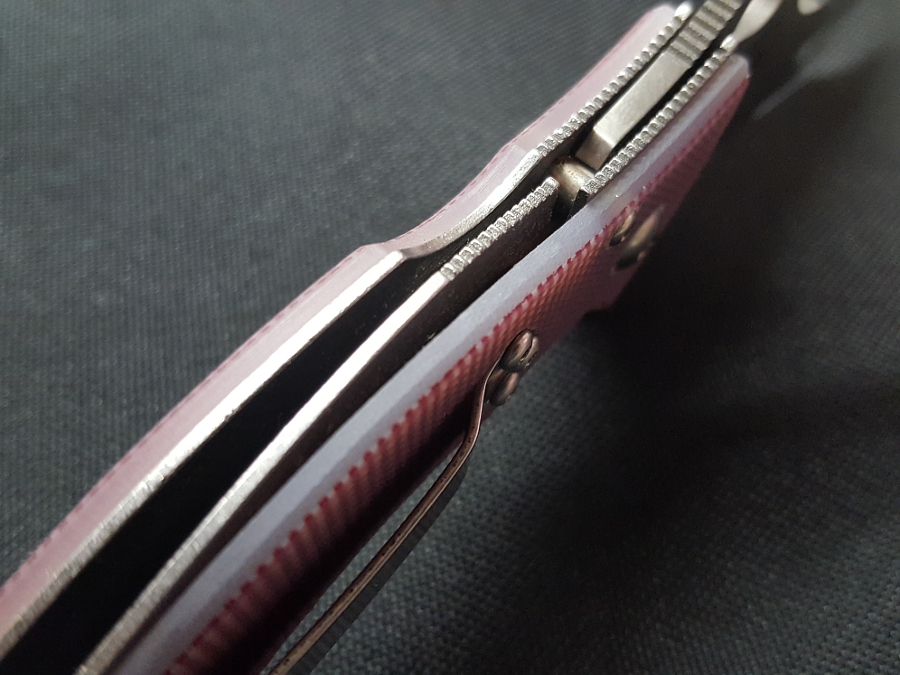
Color-coding is important to Bram. His training drones always have red handles, while the CRMIPT2 always have blue (for law enforcement). The LLC Bowies are available in a number of different colors. I’m not sure if my tanto blade’s color is considered pink or something else, but it looks almost mauve to me and is quite attractive.
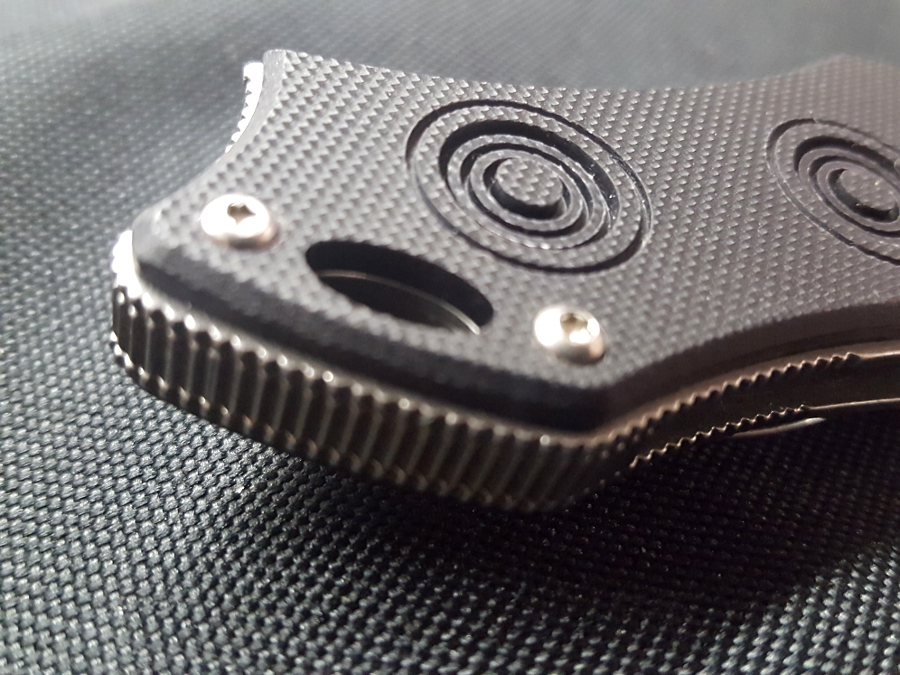
If I have any criticisms, and this isn’t really a criticism, it’s that I’d love to see Bram offer belt scabbards as was once done for earlier versions of the Gunting folders. I’ve always found these to be kind of oddly shaped for in-pocket carry (even though I appreciate that odd shape in that hammering with the Bramp is an option I enjoy having).
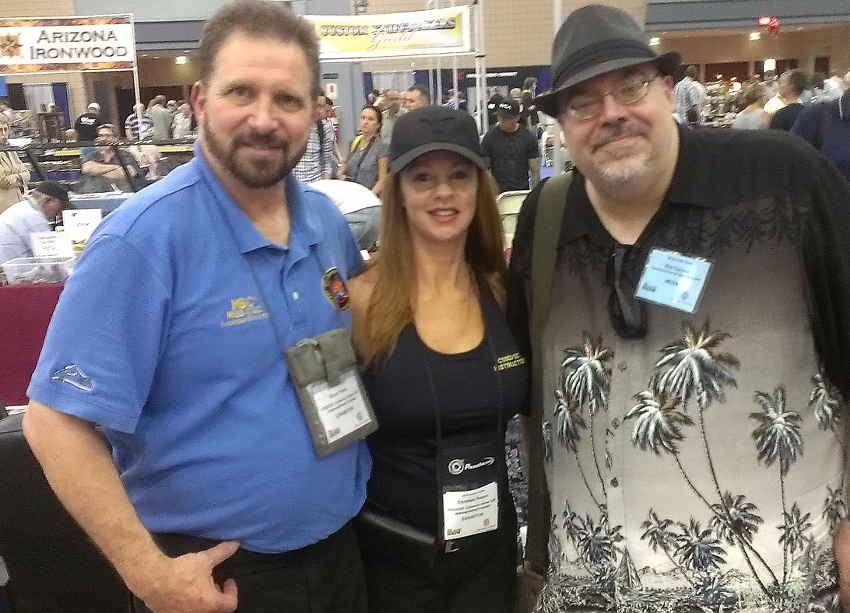
I didn’t feel like I was retreading old ground examining these knives, even having written up other knives in the series with Bowie-style blades. These are great folders, whether you do Bram’s system or just like an unusual, fully featured knife. They’re well made, well thought-out, and have many features that make them great for self-defense. They’re also able utility knives. Bram continues to produce great blades that don’t disappoint. It will be interesting to see what he comes up with in the future.